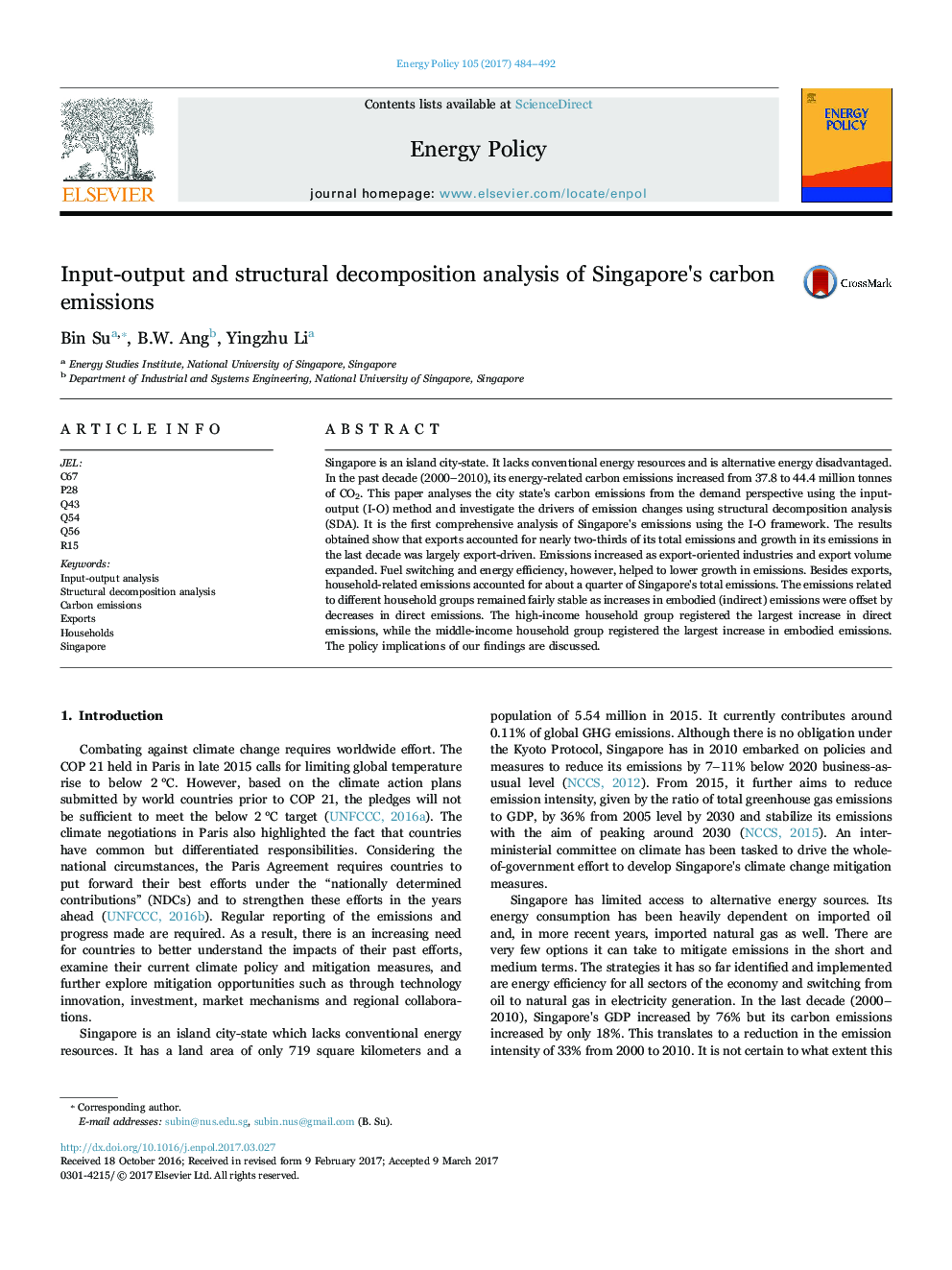| Article ID | Journal | Published Year | Pages | File Type |
|---|---|---|---|---|
| 5105910 | Energy Policy | 2017 | 9 Pages |
Abstract
Singapore is an island city-state. It lacks conventional energy resources and is alternative energy disadvantaged. In the past decade (2000-2010), its energy-related carbon emissions increased from 37.8 to 44.4 million tonnes of CO2. This paper analyses the city state's carbon emissions from the demand perspective using the input-output (I-O) method and investigate the drivers of emission changes using structural decomposition analysis (SDA). It is the first comprehensive analysis of Singapore's emissions using the I-O framework. The results obtained show that exports accounted for nearly two-thirds of its total emissions and growth in its emissions in the last decade was largely export-driven. Emissions increased as export-oriented industries and export volume expanded. Fuel switching and energy efficiency, however, helped to lower growth in emissions. Besides exports, household-related emissions accounted for about a quarter of Singapore's total emissions. The emissions related to different household groups remained fairly stable as increases in embodied (indirect) emissions were offset by decreases in direct emissions. The high-income household group registered the largest increase in direct emissions, while the middle-income household group registered the largest increase in embodied emissions. The policy implications of our findings are discussed.
Keywords
Related Topics
Physical Sciences and Engineering
Energy
Energy Engineering and Power Technology
Authors
Bin Su, B.W. Ang, Yingzhu Li,
